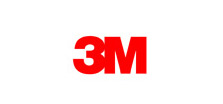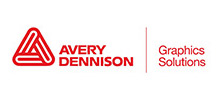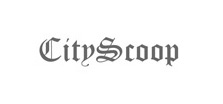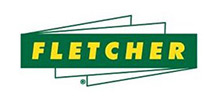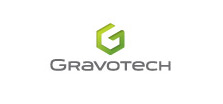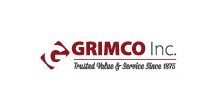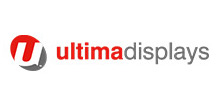The Psychology of Light: How Backlit Signs Influence Customer Behavior
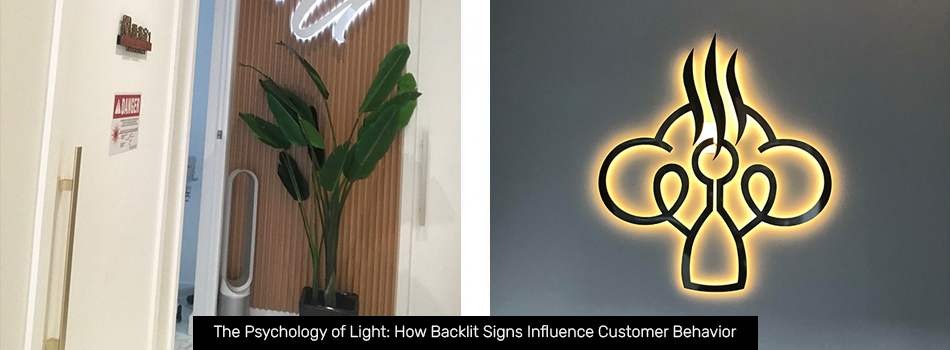
Light is a powerful force that subtly influences our daily decisions and experiences. It plays a crucial role in human perception and behaviour, affecting how we see and interact with the world. Backlit signs, increasingly common in modern advertising and retail environments, leverage this power to draw attention with bright, illuminated displays. This article explores the psychological impact of backlit signs on customer behaviour and how businesses can harness this influence to enhance their marketing strategies.
The Science of Light and Human Perception
The Role of Light in Human Vision
Light is essential for human vision. It enters the eye, where it is converted into electrical signals processed by the brain, allowing us to perceive our surroundings. Wavelengths of light are interpreted as different colours, and the intensity of light influences our ability to see details and depth.
Emotional and Psychological Responses to Light
Different lighting conditions can evoke various emotional and psychological responses. Bright, warm light can create a feeling of warmth and comfort, while cool, dim light can induce a sense of calm or melancholy. Studies have shown lighting can significantly impact mood, productivity, and purchasing decisions. For instance, bright lighting can increase arousal and attention, making people more likely to notice and remember what they see.
The Power of Backlit Signs
Visual Appeal and Attractiveness
Backlit signs are inherently more visually appealing than their non-illuminated counterparts. The use of light enhances the visibility of the sign, making it stand out in any environment. The illumination creates a glowing effect that naturally draws the eye, ensuring that the sign captures attention even in crowded or visually busy areas. This visual appeal is crucial in attracting potential customers and conveying messages effectively.
Role of Contrast, Brightness, and Color
The effectiveness of backlit signs is significantly influenced by the contrast, brightness, and colour used in the design. High contrast between the text and background ensures readability from a distance, while appropriate brightness levels make the sign visible in various lighting conditions. Colours play a vital role in evoking emotions and enhancing the overall appeal of the sign. For instance, warm colours can create a sense of urgency, while cool colours can evoke trust and calm.
Attention and Retention
Backlit signs capture attention more effectively and enhance memory retention and brand recall. The combination of light and colour stimulates the brain, making the information more memorable. This increased retention can lead to better brand recognition and a higher likelihood of customers recalling the brand when purchasing. Studies have shown that illuminated signs are more likely to be noticed and remembered than non-illuminated ones.
Influence on Customer Behavior
Impulse Buying and Immediate Actions
Backlit signs have a powerful influence on impulse buying. The bright, attractive illumination of backlit signs captures attention quickly and can create a sense of urgency. For instance, a backlit sign highlighting a limited-time offer can prompt customers to make spontaneous purchases. The visual appeal and brightness of these signs make products appear more desirable, encouraging on-the-spot decisions. Retail environments, in particular, benefit from this as impulse buying constitutes a significant portion of sales.
Perceived Quality and Brand Image
High-quality backlit signs can significantly enhance a brand’s perceived quality and image. Illuminated signs often signal premium and trustworthy brands to consumers. The quality of the signage reflects on the overall brand, suggesting that the business pays attention to details and values its image. This perception can foster customer trust and loyalty, as well-designed, well-lit signs convey professionalism and reliability. Investing in high-quality backlit signage is a strategic move for businesses looking to position themselves as high-end or authoritative.
Wayfinding and Navigation
Backlit signs are essential for wayfinding and navigation in complex environments such as shopping malls, airports, hospitals, and large retail stores. These signs help guide customers to their destinations, making their shopping or visiting experience more pleasant and efficient. Clear, illuminated wayfinding signs reduce confusion and frustration, enhancing customer satisfaction. In a retail setting, this can translate into increased sales as customers can easily find their way to desired sections or products without feeling lost or overwhelmed.
Attention and Retention
The ability of backlit signs to capture and hold attention significantly impacts customer behaviour. Brightly lit signs with high contrast and vivid colours stand out more than non-illuminated signs, ensuring they catch the eye of passersby. This initial capture of attention is crucial, especially in busy environments. Moreover, the appealing nature of illuminated signs enhances information retention. Customers are more likely to remember the brand or message displayed on a backlit sign, aiding in brand recall and recognition during purchasing decisions.
Creating Positive Emotional Responses
Lighting can evoke various emotional responses, which in turn influence customer behaviour. Warm, inviting lights can create a welcoming atmosphere, encouraging customers to spend more time in a store and browse products. Conversely, cool, bright lights can create a sense of urgency, useful in environments like fast-food restaurants or clearance sales. By strategically using backlit signs, businesses can create the desired emotional response that aligns with their marketing goals and customer experience strategies.
Enhanced Visibility in Different Conditions
One of the most significant advantages of backlit signs is their enhanced visibility, regardless of lighting conditions. Whether day or night, indoors or outdoors, backlit signs ensure the message is visible and clear. This consistent visibility helps maintain brand presence and communication effectiveness around the clock, which is crucial for businesses operating in competitive or busy areas. The assurance that their signs will be seen by potential customers at all times provides businesses with a reliable method of continuous advertising and brand reinforcement.
Designing Effective
Colour Psychology
The colours in backlit signs are critical in influencing customer emotions and behaviours. Different colours can evoke specific responses, making it essential to choose the right palette for your signage:
- Warm Colors: Red, orange, and yellow can evoke feelings of excitement, urgency, and warmth. These colours attract attention and are often used in sale signs or promotional banners.
- Cool Colors: Blue, green, and purple can induce feelings of calm, trust, and professionalism. These colours are ideal for businesses aiming to convey reliability and tranquillity, such as banks and healthcare facilities.
- Neutral Colors: Black, white, and gray provide balance and sophistication. They can highlight other colours and create a clean, modern look.
Understanding the psychological impact of colours can help businesses design backlit signs that effectively communicate their desired message and evoke the right emotions in their target audience.
Brightness and Contrast
Brightness and contrast are vital components in the effectiveness of backlit signs. The right levels ensure that the signs are visible and readable in various lighting conditions:
- Optimal Brightness: The brightness of a backlit sign should be adjusted based on its environment. For outdoor signs, higher brightness is needed to compete with natural sunlight. Indoor signs require less brightness but should still stand out against ambient lighting.
- High Contrast: Contrast between the text and background is crucial for readability. High contrast, such as white text on a black background or dark text on a light background, ensures that the message is clear and easy to read from a distance.
Adjusting brightness and contrast appropriately can make backlit signs more effective, ensuring they catch the eye and convey their message clearly.
Placement and Size
The placement and size of backlit signs significantly affect their impact. Properly positioned signs can maximize visibility and effectiveness:
- Strategic Placement: Backlit signs should be placed in high-traffic areas and easily visible to the intended audience. When positioning the sign, consider the line of sight, viewing angles, and potential obstructions. For instance, placing a sign at eye level or above ensures it is seen by passersby.
- Appropriate Size: The size of the sign should be proportionate to its viewing distance. Larger signs are suitable for highways or large storefronts, while smaller signs work well in indoor settings or closer viewing distances. Ensure the text and images are scaled appropriately to maintain readability.
By strategically placing and sizing backlit signs, businesses can ensure maximum visibility and engagement.
Design Elements
Incorporating effective design elements can enhance the appeal and functionality of backlit signs:
- Simplicity: Keep the design simple and focused. Avoid cluttering the sign with too much text or too many images. A clear and concise message is more impactful.
- Font Selection: Use legible fonts that are easy to read from a distance. Bold and sans-serif fonts are typically more readable. Avoid overly decorative fonts that may be difficult to decipher.
- Imagery and Graphics: Use high-quality images and graphics that complement the text and overall design. Ensure the images are relevant to the message and do not distract from the main content.
Testing and Feedback
Before finalizing the design, it is crucial to test the sign and gather feedback:
- Mock-ups and Prototypes: Create mock-ups or prototypes of the sign to see how it looks in its intended location. This allows for adjustments to be made before the final production.
- Feedback: Seek feedback from various stakeholders, including employees, customers, and design experts. Their input can provide valuable insights into the effectiveness and appeal of the sign.
By considering these design elements and testing the sign, businesses can create backlit signs that are visually appealing and highly effective in communicating their message and influencing customer behaviour.
Future Trends in Backlit Signage
Technological Innovations
Emerging technologies in backlit signage, such as smart lighting and dynamic displays, offer new ways to engage customers. Smart lighting can adjust brightness and colour based on ambient conditions, while dynamic displays can change the content in real-time, providing more relevant and timely information.
Sustainable Practices
Eco-friendly materials and energy-efficient lighting options are becoming increasingly important in the signage industry. Businesses are adopting sustainable practices to reduce their environmental impact and appeal to eco-conscious consumers. Energy-efficient LEDs and recyclable materials are popular choices for modern backlit signs.
Integration with Digital Marketing
Backlit signs can be integrated with digital marketing strategies to create a cohesive and engaging customer experience. QR codes and interactive displays can link physical signage with online content, providing additional information and enhancing customer interaction. This integration can help bridge the gap between physical and digital advertising channels.
Embracing the Power of Backlit Signs
Backlit signs have a profound psychological impact on customer behaviour, influencing attention, retention, impulse buying, and brand perception. By understanding the science of light and human perception, businesses can design effective backlit signs that enhance their marketing strategies and improve customer engagement. Reach out to the team at The Sign & Graphics Manufaktur today to get started!
Also Read: Things You Should Know When Opting for Backlit Signs
Back




